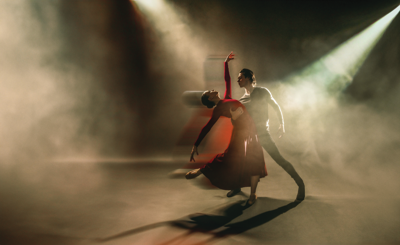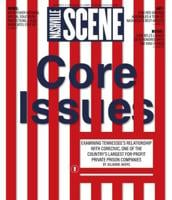Nick Mullikin’s new ballet Erase the Night is ambitious, daring and powerful. It also happens to be deeply personal.
Presented as part of Nashville Ballet’s acclaimed Attitude series — which also features exciting works by renowned choreographers Jennifer Archibald and Penny Saunders — Erase the Night takes on heavy themes of addiction, isolation and despair, while offering a message of hope and human connection.
“Erase the Night was largely inspired by my own personal journey with addiction, as well as the experiences of those around me,” says the Nashville Ballet artistic director, who recently marked 10 years of sobriety. “I had some really tough experiences along the way. And yet, I always felt the need to be quiet about them. But what I’ve found over the last few years is that the more I’m willing to talk about who and what I am, the more others will feel safe in sharing what they’re going through, and maybe realize they’re not alone. That drove my willingness to share this story. I wanted to raise awareness, and to offer a message of hope.”
Mullikin partnered with state and local addiction and mental health organizations — including the Tennessee Department of Mental Health and Substance Abuse and the National Alliance on Mental Illness Tennessee — hosting a series of community events that highlighted educational resources and support. He also worked closely with Vanderbilt medical professionals and addiction specialists in developing the ballet’s narrative.
“Those conversations with Vanderbilt were incredibly valuable in shaping the piece beyond my own experiences, and making it feel more universal,” Mullikin says. “Each one of our partners brought different elements to it. In fact, that’s how the title came about — they were talking about this idea of shadows and light and darkness, of always feeling like you have this dark cloud hanging over you, or chasing after you. And I thought, ‘Wow, I’ve definitely experienced that, but I thought maybe it was just me.’ I realized that so many people are just trying to escape that darkness, and forget all those regrettable decisions after a long night. So that’s where the title Erase the Night comes from.”
It may seem an unlikely topic for a ballet, but Mullikin says Erase the Night is ultimately a story of forgiveness and redemption.
“I wanted to tell a story in which somebody’s life unravels right in front of the audience,” he says. “I wanted to portray that overwhelming sense of panic and struggle. But in the end, it’s more about hope and overcoming. Our character realizes that despite all the troubles and turmoil, her community is still there. She’s not alone. It’s such a spectacular moment visually, with these amazing projections from Sharon Huizinga. There’s a real sense of optimism and beauty that I think will resonate with audiences.”
Talking to artistic director and CEO Nick Mullikin about how a classic art form continues to evolve
Much of that beauty comes from the original music from Jordan Lehning and Courtney Marie Andrews.
“Jordan is so easy to work with,” Mullikin says. “He’s responsive, and he asks a lot of deep questions that I think make the art better. He also suggested Courtney as someone who could accompany the dancers onstage, and I couldn’t be happier with how that’s taken shape. For me, Courtney provides an important element of narration — she sort of serves as the main character’s voice. It’s been a wonderful collaboration, and I feel so fortunate to have them both on board.”
A busy composer, producer and multi-instrumentalist, Lehning is no stranger to Nashville Ballet, having worked on Attitude productions in 2023 and 2024. Still, he says Erase the Night offered some unique challenges.
“It’s a delicate balance because this is Nick’s personal story,” Lehning says. “But it still needed to feel honest, to sound like us. It was important to me to come from a place of empathy, rather than blame or judgment. The challenge was in conveying the story without being too ‘woe is me’ — keeping that sense of empathy without coddling. It was challenging, but I feel like we struck the right balance.”
One way Lehning achieves this is by featuring a solo violin at both the beginning and end of the piece — reinforcing the idea that, for better or worse, the main character is responsible for her own decisions.
“I think the tone is very consistent throughout, but the way we’ve closed it is pretty powerful,” he adds. “It’s been exciting to see it all come alive, and I’m grateful to be entrusted to tell Nick’s story in this way.”
Singer-songwriter Andrews agrees, calling the project “incredibly rewarding.”
“This is my first time doing something like this, so I’m really thankful for the opportunity to stretch and grow as a writer,” she says. “But I feel like that’s the beauty of being a writer — exploring other people’s stories, trying to get into the mind of a character and telling their story in an authentic way. I hope audiences will be moved and empowered to talk about it.”






